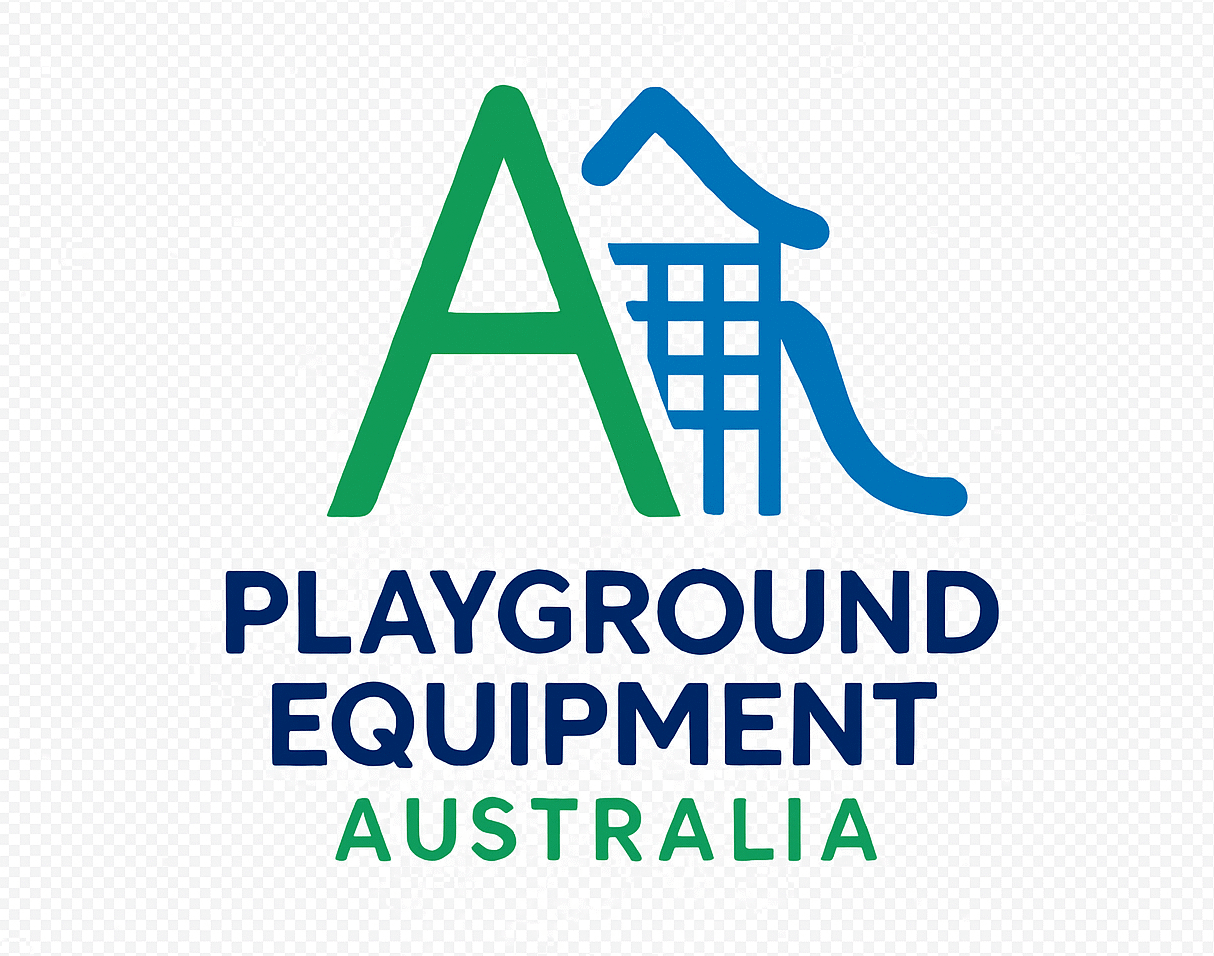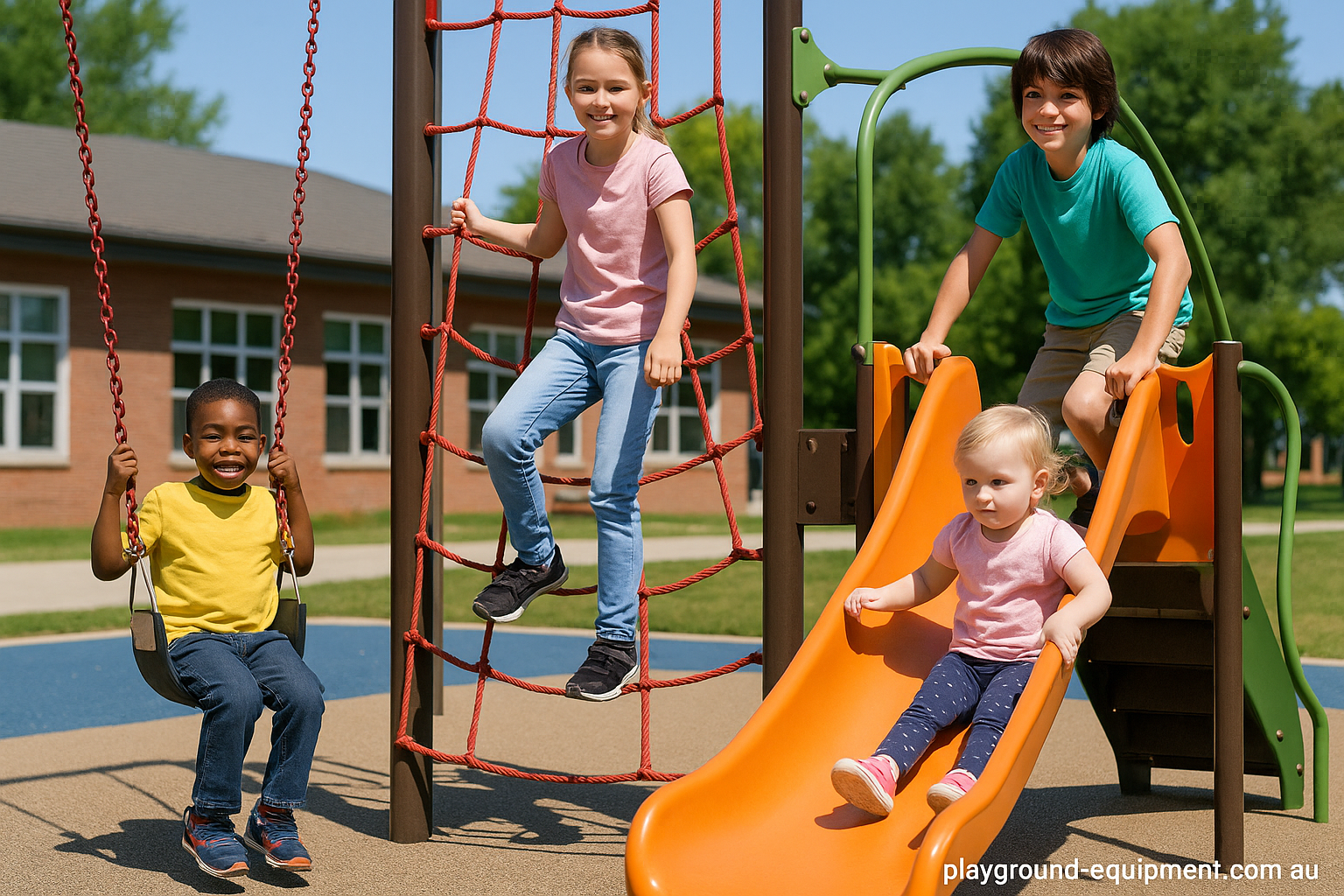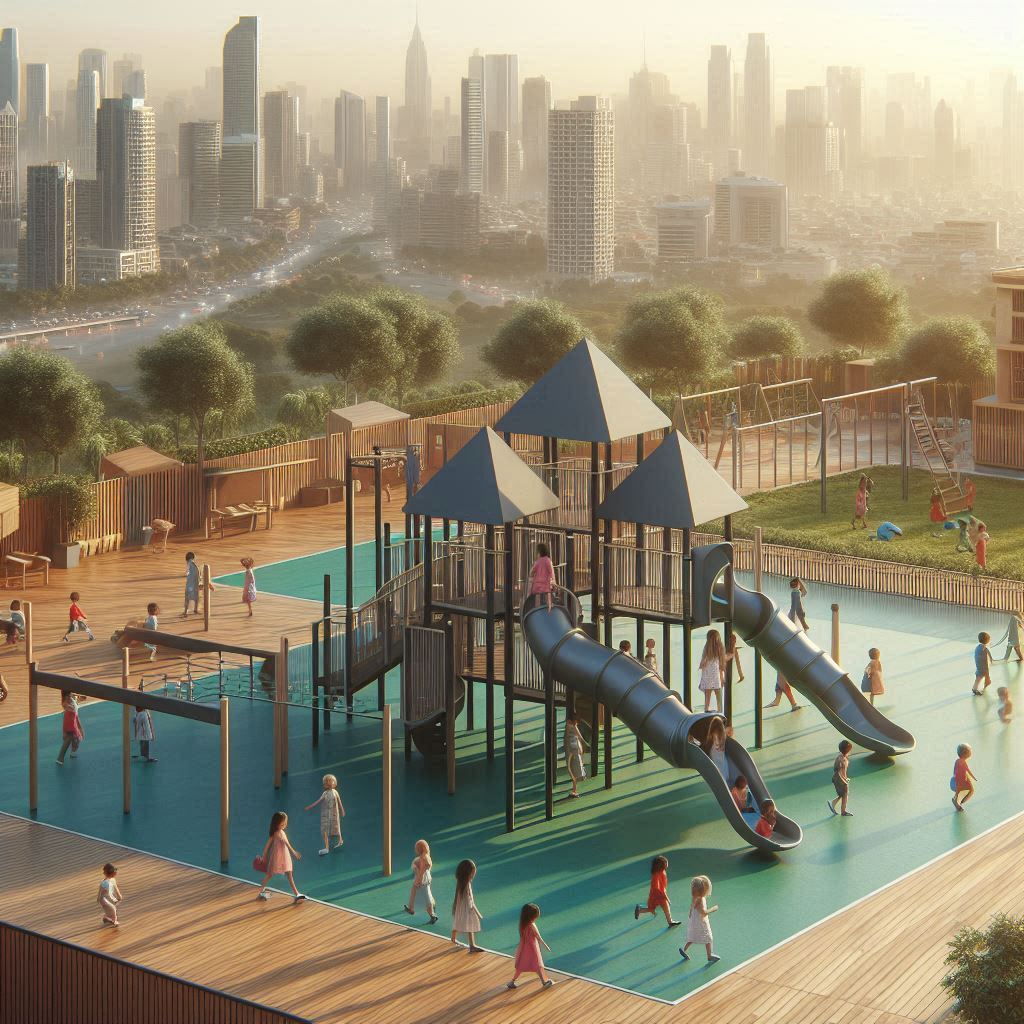Why This Matters: More Than Just Playtime
For many parents and schools, playgrounds are seen as a place for kids to “burn off energy.” But scientific research says otherwise — outdoor play is a developmental powerhouse. The right playground equipment, matched to the child’s age, can enhance motor skills, executive function, emotional regulation, and social interaction.
The Science Behind Outdoor Play
Research in child development, neuroscience, and education consistently shows:
- Movement boosts brain function – Gross motor activity increases blood flow to the brain, improving focus and memory.
- Risk-taking supports problem-solving – Managing climbing challenges improves decision-making and resilience.
- Free play strengthens executive function – Tasks like planning, self-regulation, and adaptability all grow through unstructured outdoor activities.
- Sensory input supports nervous system development – Natural textures, swings, balance beams and climbing nets provide essential proprioceptive and vestibular stimulation.
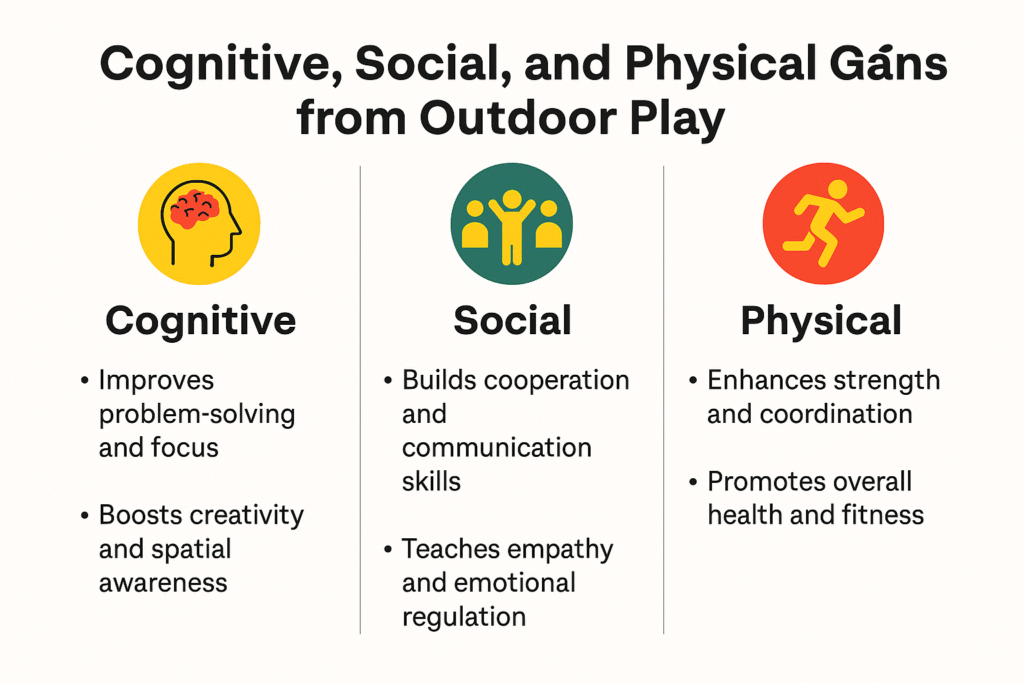
Age-by-Age Breakdown: What Kids Gain from Outdoor Play
Ages 2–4: Foundation Stage
- Cognitive Gains: Spatial awareness, cause-and-effect understanding
- Best Equipment: Low slides, soft climbing blocks, toddler swings
- Focus Areas: Balance, coordination, simple pretend play
- Tip: Use brightly coloured, easy-grip surfaces to promote engagement.
Ages 5–8: Skill Expansion
- Cognitive Gains: Planning, storytelling, early teamwork
- Best Equipment: Monkey bars, climbing nets, themed playhouses
- Focus Areas: Muscle development, rule-based group play
- Tip: Integrate play elements with imaginative storytelling.
Ages 9–12: Confidence & Mastery
- Cognitive Gains: Risk assessment, leadership, empathy
- Best Equipment: Zip lines, obstacle courses, rope towers
- Focus Areas: Strength, independence, peer collaboration
- Tip: Encourage open-ended challenges to stretch limits safely.
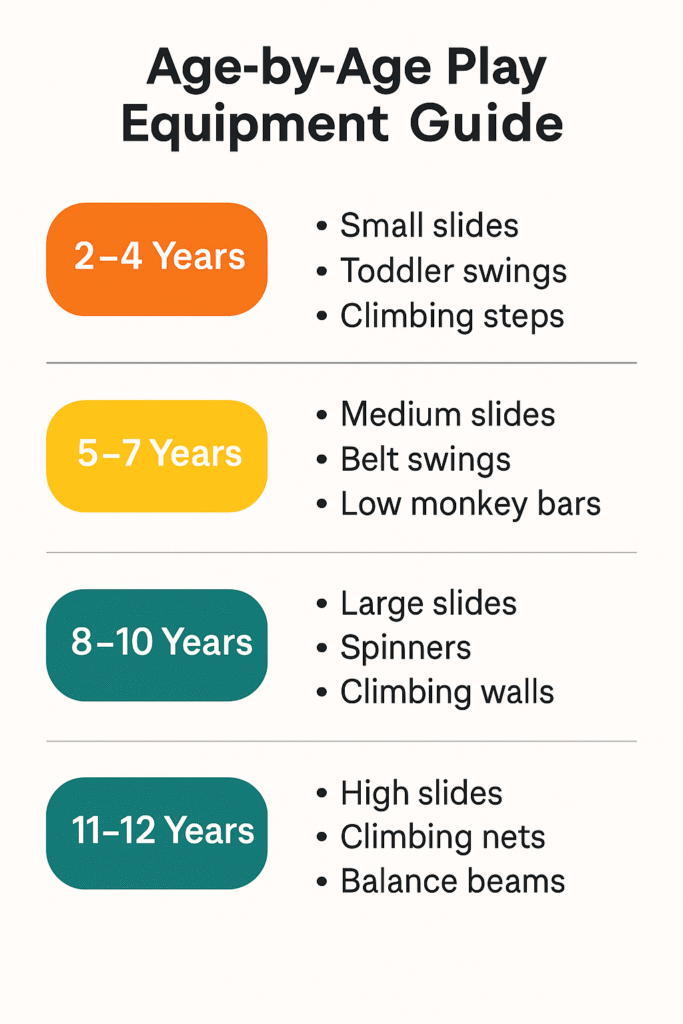
Sample Research Highlights (With Sources)
| Developmental Area | Research Findings |
|---|---|
| Brain Function | Children in daily outdoor play scored higher in working memory and cognitive flexibility tests (Harvard EDU Study, 2022) |
| Physical Health | A 2021 Australian study showed 45% higher core strength in children attending nature-based schools |
| Social Skills | Peer-reviewed research links outdoor group play to stronger emotional intelligence and reduced anxiety |
Where Outdoor Equipment Plays a Key Role
Use well-matched commercial-grade equipment to enhance developmental outcomes:
- Climbing Nets → Core strength + spatial awareness
- Spring Riders → Balance and proprioceptive feedback
- Slides and Swings → Vestibular system development
- Cubby Houses → Imagination, collaboration, and language development
Implementation Tips for Schools and Parents
- Zone the playground by age – Use signage and layout to ensure safety and age-appropriate use
- Create multi-sensory paths – Combine surfaces like turf, wood chips, and rubber for barefoot balance trails
- Incorporate language prompts – Add signs like “Climb like a kangaroo!” to stimulate language use and pretend play
- Rotate play elements – Encourage new challenges by rearranging portable pieces quarterly
Free Resource Download (PDF)
Download our exclusive “Outdoor Play & Development Age Guide” PDF.
Includes:
- Age-matched equipment checklist
- Cognitive milestones by age group
- Playground layout sketch templates for schools
- Printable activity prompts for group play
Educator Insight:
“Once we integrated sensory-rich playground zones, we saw a sharp drop in lunchtime conflicts and improved classroom focus.”
— Head of Early Learning, Melbourne Catholic School
Final Takeaway
Playgrounds are more than entertainment — they’re tools of growth. Backed by science and designed with purpose, the right outdoor equipment empowers children’s brains and bodies to grow together.
